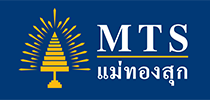



· Vaccine optimism could feed into the market’s biggest near-term risk, says top economist, who sees full recovery in 2021
The market’s relief rally does not come without risk, according to one top economist.
This week’s surge in the U.S. stock market may have been fueled by word of a 90% effective Covid-19 vaccine, but investors shouldn’t get too comfortable rallying on optimism just yet, Michael Darda, chief economist and macro strategist at MKM Partners, told CNBC’s “Trading Nation” on Wednesday.
“In the near term, the risk is obviously this surge in infections, ... being led by the Midwest and the West,” he said.
“The vaccine is not going to be here overnight. It’s going to take time to roll it out, to get it distributed and disseminated. And so, in the interim, if we let our guard down, we could have some problems, even potentially prompting partial closures again.”
While the pace of the economic recovery has exceeded much of Wall Street’s expectations, unprecedented coronavirus case spikes across the country are without doubt a threat, said Darda, who expects a full recovery by the end of 2021.
“Longer term, I think we have to be very optimistic that we’ll return to full economic health, but in the very near term, the rise in case counts is worrying, and if the good news on the vaccine feeds into this sense of complacency and we let our guard down, that could be a potential problem,” he said.
“Even though the economy remains depressed — we’re certainly nowhere near full employment — the unemployment rate has been dropping very rapidly over the past six months,” he said.
Small business owners also showed increasing confidence in the economy’s health, with nearly a fifth of those surveyed planning to create jobs in the next three months, according to NFIB.
“As long as those high-frequency indicators in the labor market continue to improve and confidence holds in there, I think we can continue to look forward to an ongoing business cycle recovery and hopefully, before 2021 is out, ... a return to full economic recovery, full employment.”
Darda’s S&P 500 target for the end of this year remains 3,600, which would be an all-time high for the index, just above its Sept. 2 record. It implies less than 1% upside from the S&P’s Wednesday close of 3,572.70.
“I think these gains are definitely supported by the fundamentals turning,” Darda said. “We could build on them, but the bulk of the gains are probably in place now.”
· Stock futures lower after Nasdaq’s comeback session
U.S. stock futures were lower on Wednesday evening following a strong session for tech stocks.
Futures contracts tied to the Dow Jones Industrial Average fell 181 points. Those for the S&P 500 and the Nasdaq 100 also traded in negative territory.
More positive news on the vaccine front could come soon, as Moderna announced on Wednesday evening that its phase-three trial had accrued enough cases of the coronavirus to submit the preliminary results to an independent safety monitoring board.
The positive news for vaccines comes amid a worrying rise in Covid-19 cases across the country. The United States has now confirmed more than 10 million cases of the virus and some areas, including New York City and San Francisco, have announced new economic restrictions in an attempt to slow the spread.

· Asian stocks pare gains amid caution about bets on coronavirus vaccine
Asian shares pared their gains in choppy trade on Thursday as investors awaited further details on whether drugmakers can develop a coronavirus vaccine.
MSCI's broadest index of Asia-Pacific shares outside Japan .MIAPJ0000PUS rose 0.06% to 609.41, which is near its January 2018 high of 617.12. Chinese shares .CSI300 erased early gains and fell 0.02%. Stocks in Japan .N225 hit a 29-year high.
· Nikkei closes near 29-1/2-year high; vaccine caution weighs
Japan's Nikkei share average closed near a 29-1/2-year high on Thursday as technology shares tracked their U.S. peers higher, although gains were checked by profit-booking following a rally fuelled by optimism over COVID-19 vaccine-related developments.
The benchmark Nikkei .N225 settled 0.68% higher at 25,520.88, after hitting its highest level since June 5, 1991 earlier in the session.
Stocks briefly fell into negative territory in afternoon trade, as some investors turned cautious about the rally and booked profits.
· Shanghai shares ease as data shows soft growth in Oct bank loans
Shanghai shares ended lower on Thursday after data showed that the country's new bank loans last month fell more than expected to their lowest in a year on tightened loan quotas.
The blue-chip CSI300 index rose 0.1% to 4,908.46, while the Shanghai Composite Index slipped 0.1% to 3,338.

· European markets open lower, following downward trend set in U.S.
European stocks opened lower Thursday, bucking a positive trend seen in Asia and the U.S. after tech stocks rallied in the previous session.
The pan-European Stoxx 600 fell 0.8% at the start of trading, banks shedding 1.6% to lead losses as all sectors and major bourses slid into negative territory.
Reference: Reuters, CNBC
